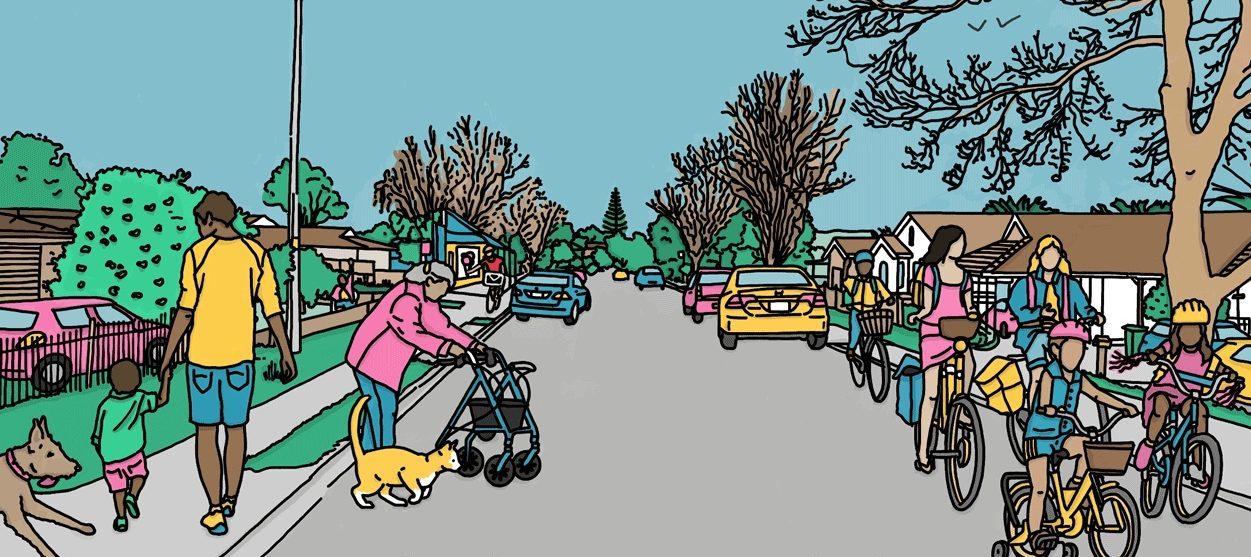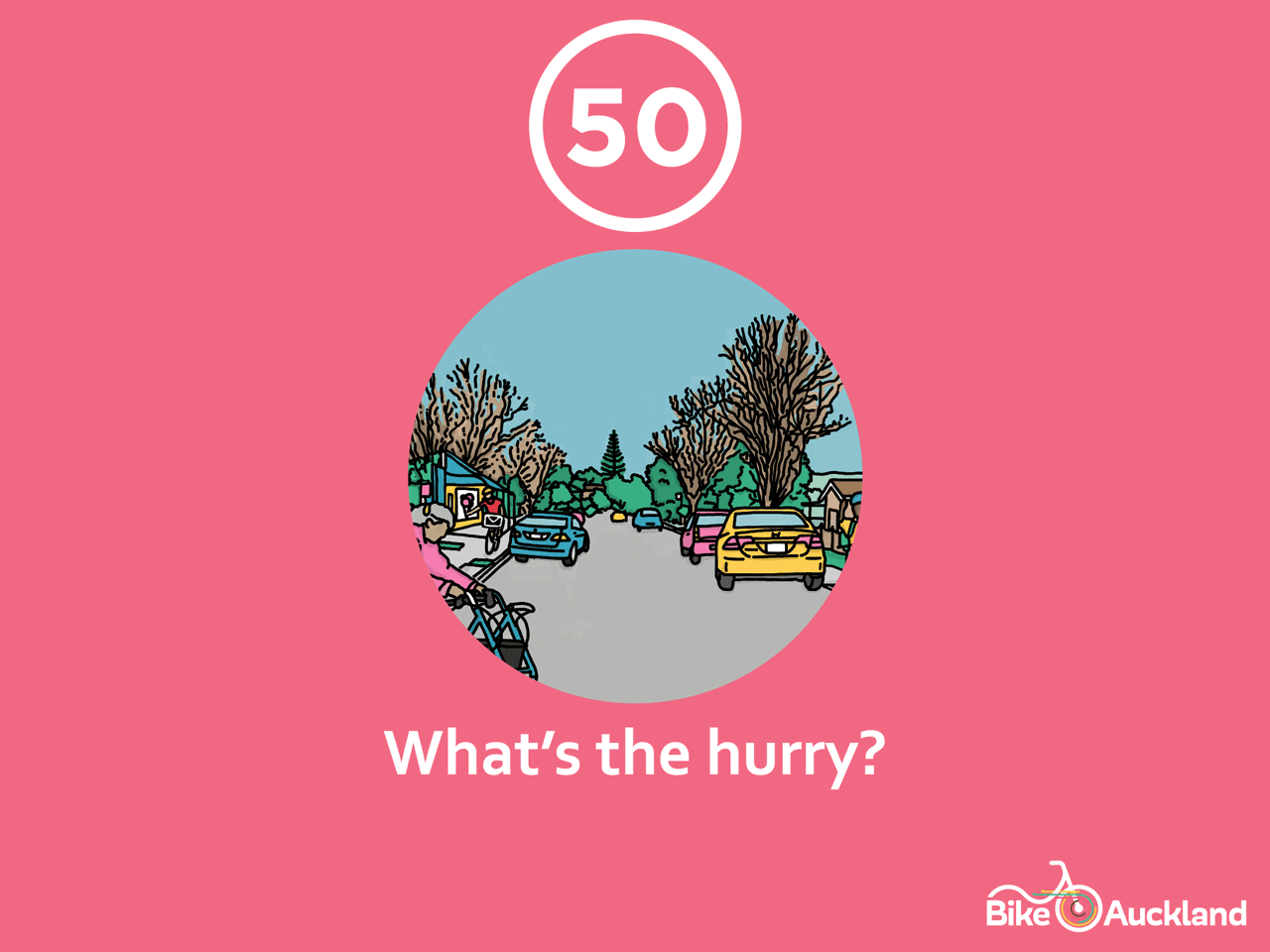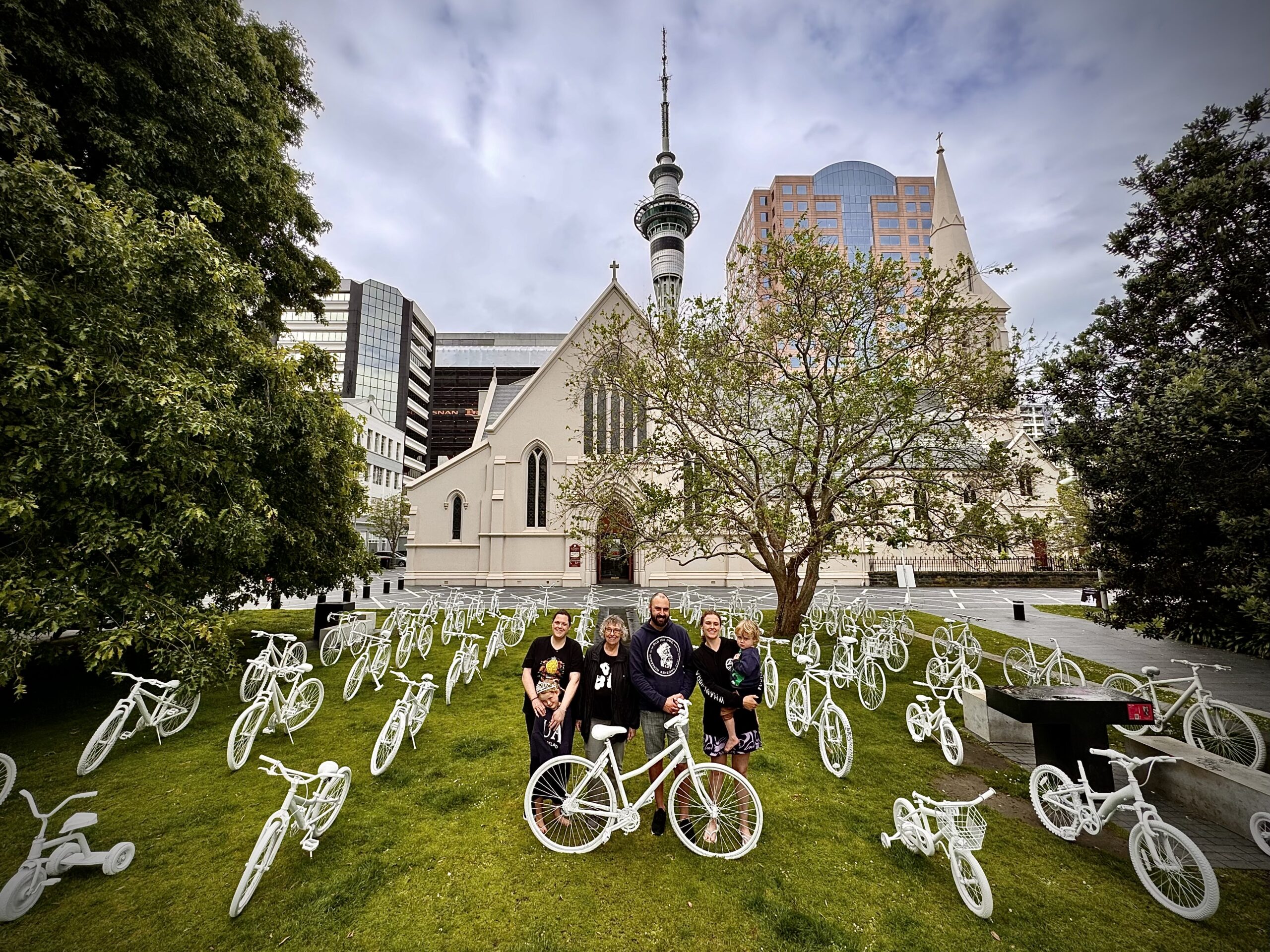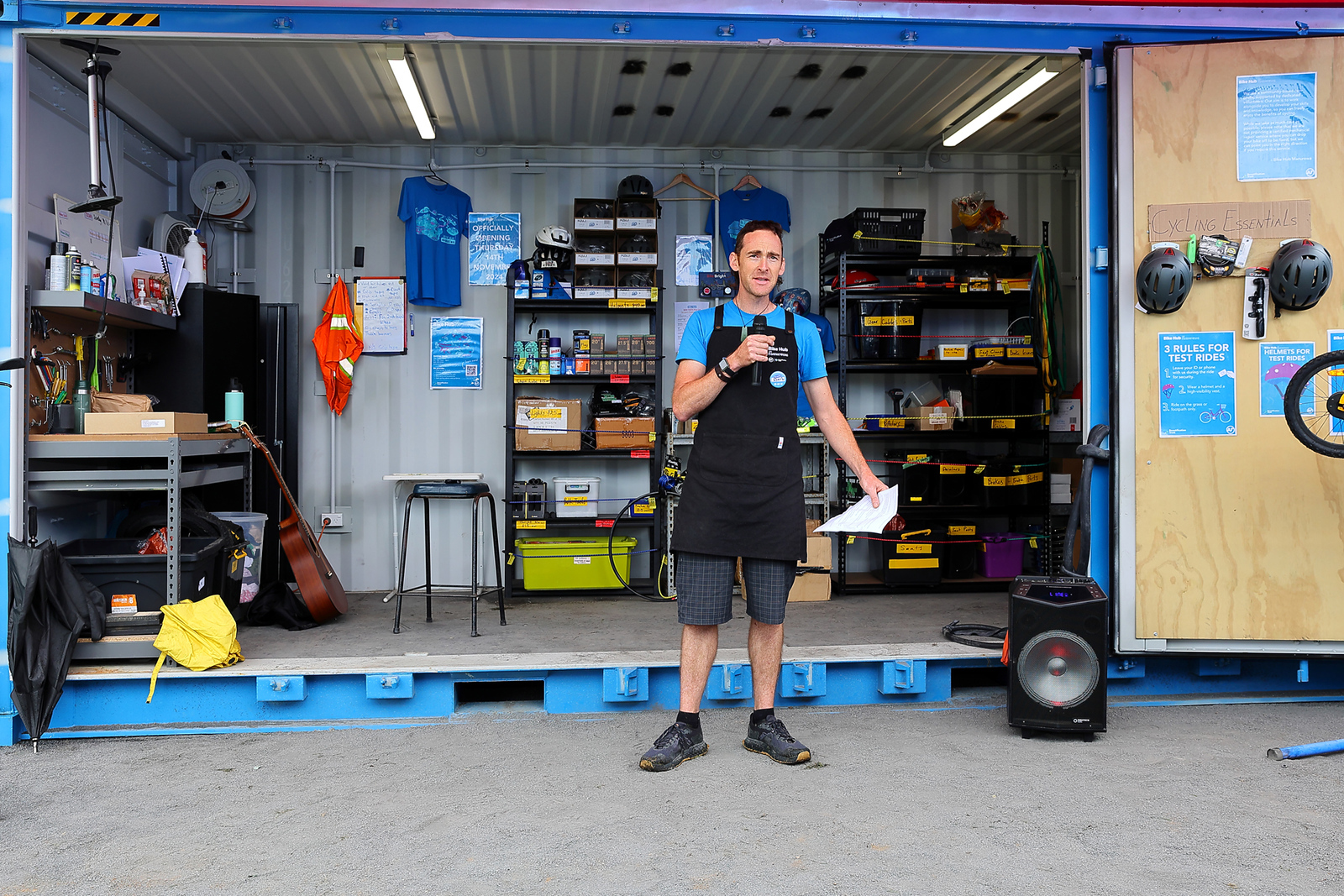I was lucky to have the joy of cycling to kura (school) with my friends. I have such happy memories from those journeys, and I stayed active and healthy because of it! My bike gave me freedom – want to go to a friend’s house? No worries, I’ll hop on my bike. And, it set me up for a life-long habit – it’s why I’m cycling for my transport now. To me, it is a great injustice that most children no longer have this freedom; our streets have become so unsafe that many parents and schools ban children from cycling for their journeys. We have an opportunity now with this consultation to make streets around schools safe for kids to walk and cycle for their journeys; and to experience the joy, freedom, and exhilaration that many of us got to have. The Katoa Ka Ora Speed Management Plan proposes to create safer speed areas around many kura (schools) across Tāmaki Makaurau Auckland – and misses others out entirely! Auckland Transport, your local board, and local schools need to hear from you – Fiain d’Leafy
Katoa, Ka Ora Speed Management Plan – Auckland Transport
Waka Kotahi’s Road to Zero strategy includes a key action to have safe speeds around all schools across Aotearoa New Zealand by the end of 2027. It actually requires 40% of these changes to be completed by 30 June 2024! Auckland Transport’s Katoa, Ka Ora is giving effect to those requirements.
The plan proposes:
- school zones so children feel safer walking to school
- safe neighbourhood zones so everyone is safe on roads around their home
- safe rural areas so people are safe on rural roads.
To make your submission:
- Healthy Auckland Together have given ratings to each local board area based on whether the speed changes proposed for around the schools are enough! They’re ranked from Waiheke with an A to Kaipātiki with an F, and list the schools which will miss out. Check out their scorecards to assist with your submission
- This page includes links to summaries in various languages, the full plan, and maps by local board
- Check out AT’s interactive map of proposed changes
- More background on the plan is available here
- Equip yourself with key stats on why safer speeds matter
Make your submission by 28 August. Read on to find out more about safe speeds and how you can help!
“Imagine an Aotearoa where everyone can get to where they’re going safely. Where it’s safe to drive to work and home again or visit whānau and friends. Where it’s safe to ride bikes and let tamariki walk to school. Where transport improves our health and wellbeing, creating live-able places for our communities.”
Speed and Infrastructure, Waka Kotahi
Why do safer speeds matter?
Safer speeds keep people safe – it’s in the name! Worldwide research has shown time and time again that 30km/hr is the sweet spot which can turn a deadly crash between a vehicle and someone walking or cycling into something we can get up and walk away from.

Here in Tāmaki Makaurau Auckland the evidence is clear: reducing speeds saves lives and reduces harm.
“We know that where safe and appropriate speed limits have been implemented injuries and deaths have reduced. Data from the first phase of speed limit changes in June 2020, showed a 30 percent reduction in deaths and a 21 percent reduction in serious injuries. In comparison, across all Auckland roads for the time period (24 months), road deaths increased by 9 percent.”
Safe Speeds – the reasons, Auckland Transport
And harm is not only the direct injury; it’s the devastation that rocks a community after losing someone, and the stress whanau go through when someone they love has a long recovery from severe injury.
“In 2017 alone, 64 people died and an additional 749 were seriously injured on our roads. That amounts to more than a 70% increase since 2014 or over three times the rate of the rest of New Zealand. These are not just numbers but represent our people, our whanau and our communities, whose lives have forever changed and been devastated due to road trauma.
Safer Speeds Consultation, 2019
Safer speeds lower both the risk of having a crash, and the risk of dying or being seriously injured in one – literally lowering the stakes, for people inside cars, and those outside. On both rural roads and urban streets, safer speeds will save lives.”
What’s more, people can feel the difference. 30km/hr streets feel safer, more pleasant, and are quieter. So, people start to walk and cycle for their trips more! This is crucial for us to meet our emissions and mode-shift targets.
“After Berlin introduced 30km streets, the city experienced a bike boom: It was the 30-km/h speed limit that got people riding bikes, and because people were riding the council provided infrastructure. Turning Berlin into a cycling city was an unintended by-product of comprehensively lowering the urban speed limit.”
Six reasons to support safer speeds, 2019
A network of 30km/hr streets connected by raised crossings and protected cycleways along arterials would go a long way towards enabling transport choice; and more joyful, resilient, and quieter streets! It’s one of our fastest, most affordable ways of creating safe places to ride from A to B!
What about variable speeds?
In Katoa Ka Ora some schools are listed as having a variable speed limit. This means that they would have a 30km/hr speed limit at the school start and end times, but the speed limit would return to the current limit (likely 50km/hr) for the rest of the day. This would not create the safe streets our children derserve: 85% deaths and serious injuries immediately outside of schools occur outside of pick up and drop off time. Children are still using the streets around schools throughout the whole day; for getting to and from before and after school care, for school trips, and for extra curricular activities like choir, theatre, and sports practice.

Variable speeds are also simply too easy to forget about. A permanent speed change is a much easier habit to follow; and ensures everyone using the street is safer.
“There needs to be a paradigm shift on how we think about streets and who they are used by. We must remove cars from the top of our transport hierarchy and put people back.
Lowering speed limits: Cutting the Gordian knot, 2014
We should start by assuming that the speed limit on all streets within the city should be 30km/h. A case must then be made for the speed limit being higher. That higher limit can only be instigated once pedestrians and cyclists are safely separated from the motor traffic. Simple and yet so difficult.
Aren’t cities about people?”
You can help make streets safe for kids to walk, cycle and scoot to school! Here’s how:
- Submit on this consultation by the 28 August, letting Auckland Transport know that you support permanent speed changes to 30km/hr around all schools. Make sure to point out the ones they’ve missed. Healthy Auckland Together’s scorecards will help for this! It’s also important to request permanent changes rather than variable ones.
- Write to your local board to let them know you support permanent speed limits of 30km/hr around your local schools. Healthy Auckland Together has created this awesome community information pack (PDF) which includes an awesome template. We also have tips for writing to the local board here.
- Connect with your local schools and encourage them to submit on the consultation, write to their local boards, and present to their local board. Schools can help keep their students safe by telling Auckland Transport and their local board that they support permanent 30 km/hr speed limits on surrounding streets
You could also…
- Share your story with Healthy Auckland Together, so they can learn how dangerous speeds are impacting your community.
- If you’re a school principal or community leader, contact Healthy Auckland Together to explore other ways you can get involved.





